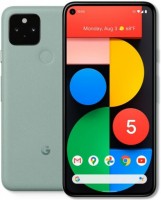Mobile Phones Google series Pixel 7
Google Pixel 7
In the spring of 2022, Google held an official presentation of the new generation of Google Pixel 7 and Google Pixel 7 Pro smartphones. Like the last 2 years, it was a presentation for geeks, where a lot of time was devoted to talking about the new Google Tensor processor model and advanced machine learning algorithms. According to Google, thanks to the deep implementation of AI, they were able to offer potential users unique opportunities in the areas of security, speech recognition, as well as many interesting things for photo and video shooting.
 |
Both Pixel 7 devices belong to the top level, equipped with top-end OLED displays, flagship cameras with optical stabilization, modern communication modules (5G, Wi-Fi 6E, Bluetooth 5.2), fast wireless charging and other goodies of AAA-class smartphones. The design of the devices has not changed much compared to the previous generation, but new colors have appeared: obsidian, snow, lemon and walnut). Against the background of a regular pixel, the Pro model stands out due to a slightly more massive screen (6.7 inches versus 6.32 "), a capacious battery (5000 mAh versus 4355 mAh) and more RAM (12 GB versus 8 GB). is 120Hz, not 90Hz like the regular Pixel 7.
Both devices are powered by the all-new Google Tensor G2 8-core processor with next-generation Tensor Block and advanced machine learning features. According to Google, the use of a custom rather than mass solution from Snapdragon and Mediatek allowed them to provide better smartphone performance, optimize hardware and introduce new multimedia features. For example, the Pixel 7 camcorder is able to blur the background in videos, as if it were a porter photo. The Photo Unblur function with the help of neural networks can remove random blur on the video, which is caused by the movement of an object or camera shake. Night Sight is now 2x faster. And the voice recorder recognizes speech much better and converts text to audio, and can also put visual notes when different people speak.






